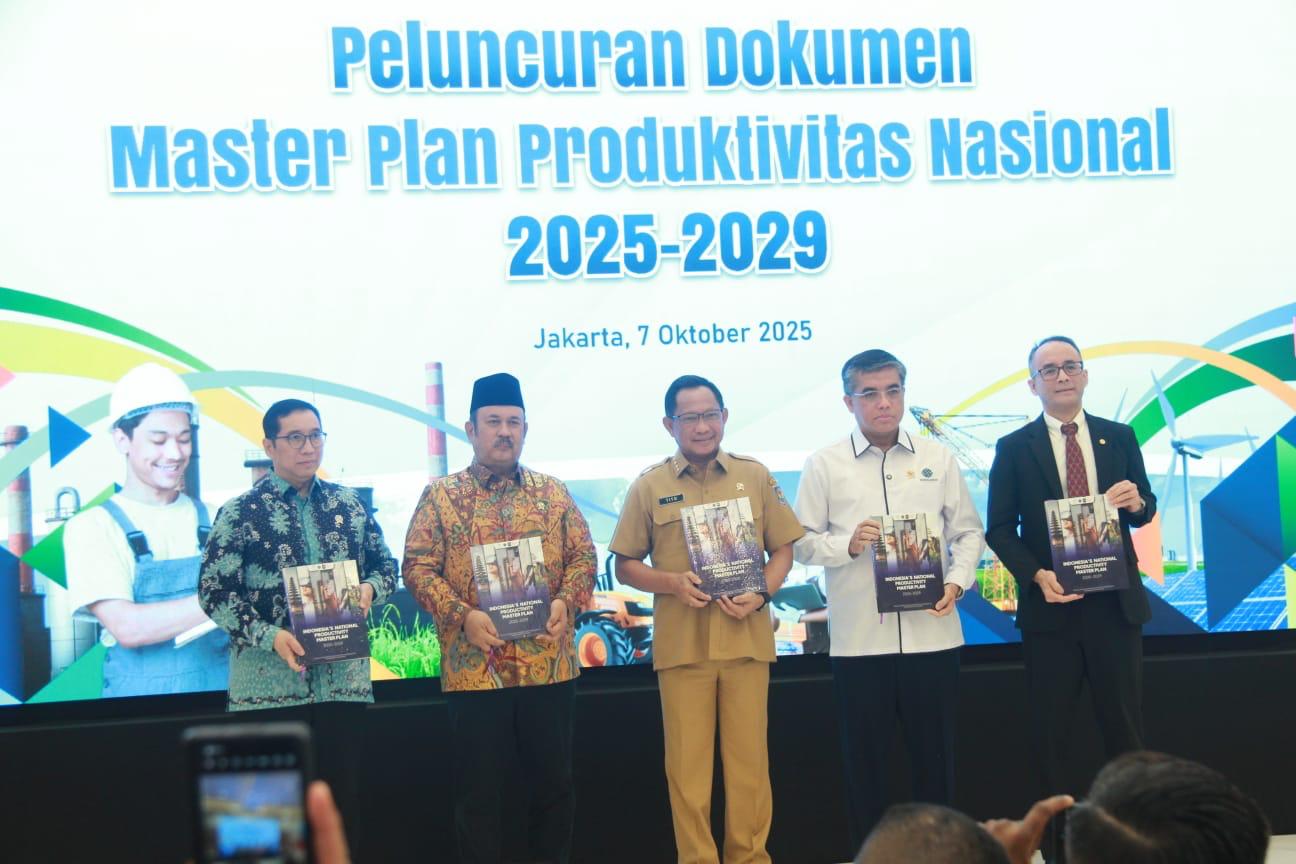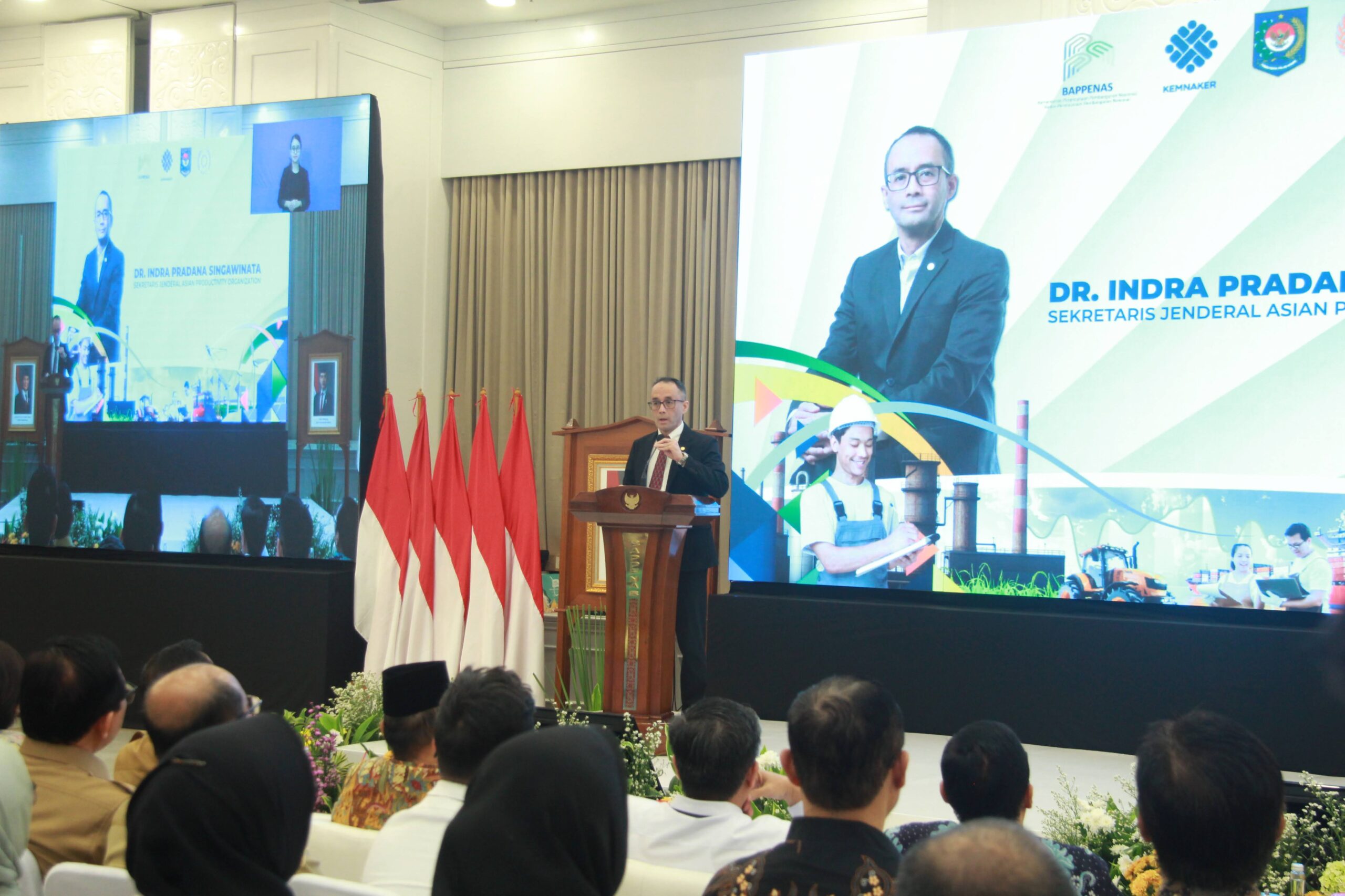
Select Page
 Left to right: Vice Minister Febrian Alphyanto Ruddyard, Minister Pambudy, Minister Tito Karnavian, Minister Yassierli, and APO Secretary-General Dr. Indra present the National Productivity Master Plan (MPPN) 2025–2029.
Left to right: Vice Minister Febrian Alphyanto Ruddyard, Minister Pambudy, Minister Tito Karnavian, Minister Yassierli, and APO Secretary-General Dr. Indra present the National Productivity Master Plan (MPPN) 2025–2029.
Indonesia officially launched its National Productivity Master Plan (MPPN) 2025–2029 in Jakarta on 7 October 2025. The plan acts as a whole-of-nation blueprint to anchor growth in productivity and innovation. The ceremony featured keynote remarks by APO Secretary-General Dr. Indra Pradana Singawinata, Minister of Manpower Professor Yassierli, Minister of Home Affairs Muhammad Tito Karnavian, and Minister of National Development Planning/Head of the National Development Planning Agency (BAPPENAS) Professor Rachmat Pambudy, underscoring the unified commitment across central and local government and other stakeholders. The event also included a panel on aligning policy and execution across central agencies, provinces, and the private sector and a formal joint launching moment by the ministers and the APO. The master plan was prepared in collaboration with the APO as part of its advisory role to member economies.
In his keynote address, Dr. Indra framed the master plan as a paradigm shift from input-driven growth to growth led by total factor productivity, calling for orchestrated cross-government execution with BAPPENAS as the national system integrator. He emphasized that productivity, which he described as “working smarter, cutting waste, and accelerating what adds value,” must become a daily practice across classrooms, shop floors, public services, and supply chains, and he invited all stakeholders to treat the launch as a “collective contract” for higher-quality jobs, competitiveness, and broad-based prosperity. The remarks also acknowledged recent headwinds in the form of Indonesia’s low labor-productivity growth, around 2.6% over the past decade, and positioned the MPPN as Indonesia’s vehicle to reverse the trend.
Minister Yassierli highlighted productivity, which improves product quality, cost efficiency, and export competitiveness, as the engine of Indonesia Emas 2045 (“Golden Indonesia 2045”). He pointed to Indonesia’s stable 5% GDP growth occurring alongside one of the lowest productivity improvement rates in ASEAN, which makes significant productivity gains essential to reach the ambition of 8% economic growth by 2029. Harnessing Indonesia’s demographic bonus will require skills upgrading, technology adoption, and stronger labor market institutions so that quantity becomes quality.
Minister Tito Karnavian underlined that resilient, well-coordinated local governments are the foundation of national productivity, calling for the effective alignment of central and provincial governments under the current division of functions and for governance that turns demographic and structural transitions into inclusive, sustainable growth.
Presenting the plan, Minister Pambudy linked the MPPN to the architecture of Indonesia’s long-term development plan (RPJPN) and medium-term development plans (RPJMNs) and outlined a collaboration agenda to “leap into a new era” of productivity-based growth, including the MPPN’s rallying “8-4-2-2” movement, which will align programs, budgets, and accountability nationwide.
As a productivity partner for Indonesia, the APO affirmed that it would continue to provide support through policy assistance, capacity building, and demonstration and diffusion projects to ensure disciplined, result-oriented implementation.
 APO Secretary-General Dr. Indra Pradana Singawinata gives a keynote address at the launch of the National Productivity Master Plan (MPPN) 2025–2029 for Indonesia.
APO Secretary-General Dr. Indra Pradana Singawinata gives a keynote address at the launch of the National Productivity Master Plan (MPPN) 2025–2029 for Indonesia.